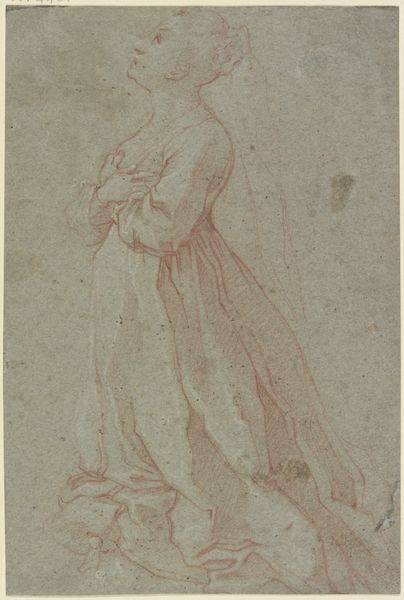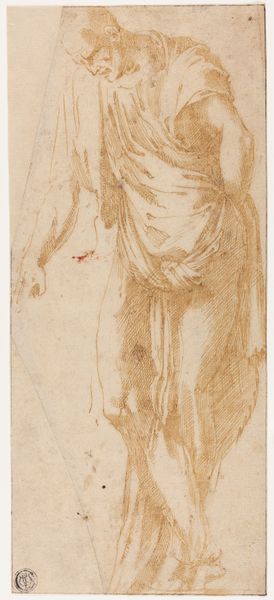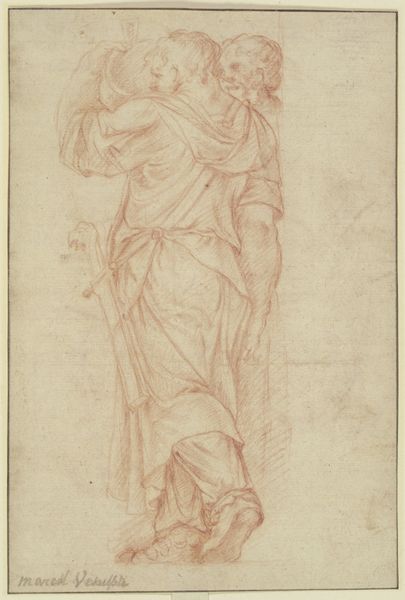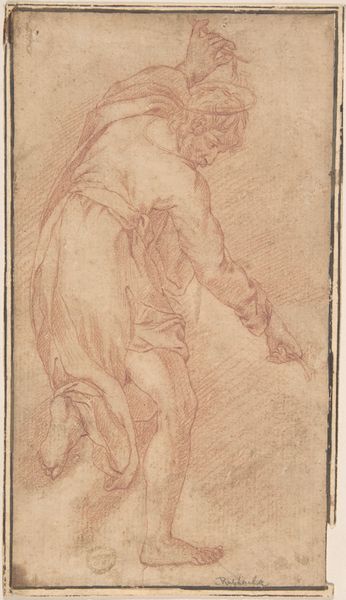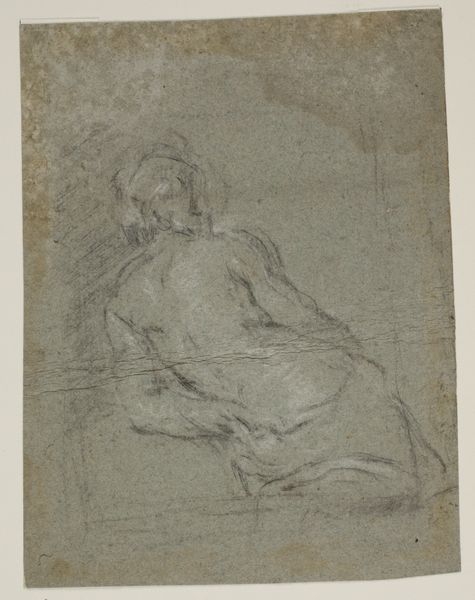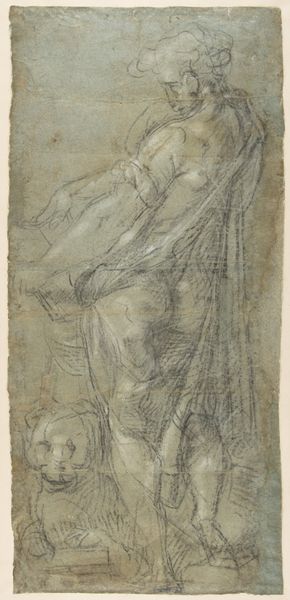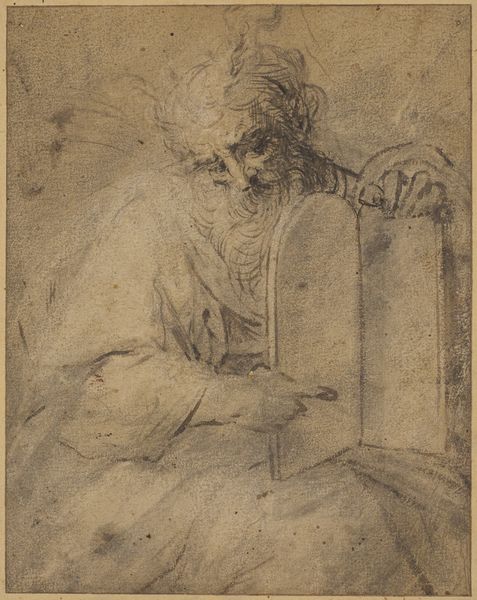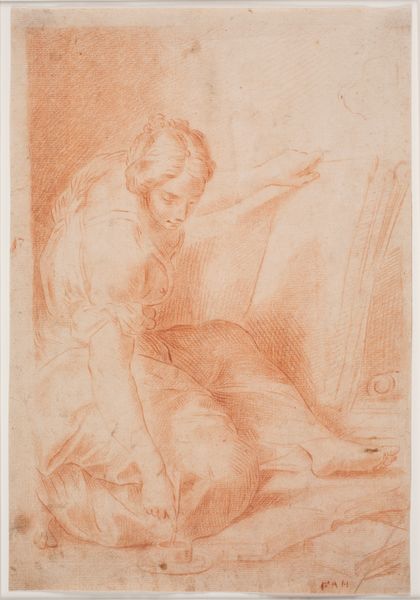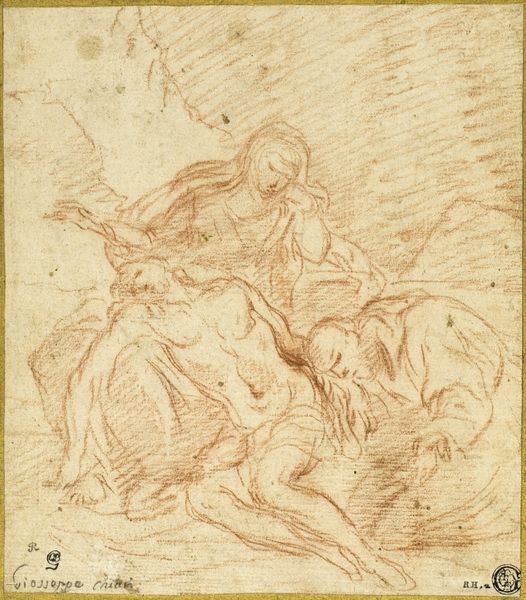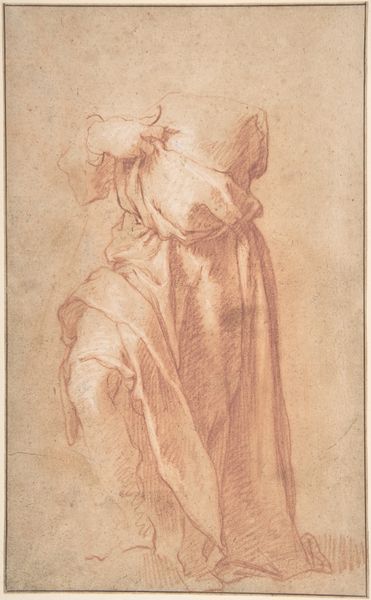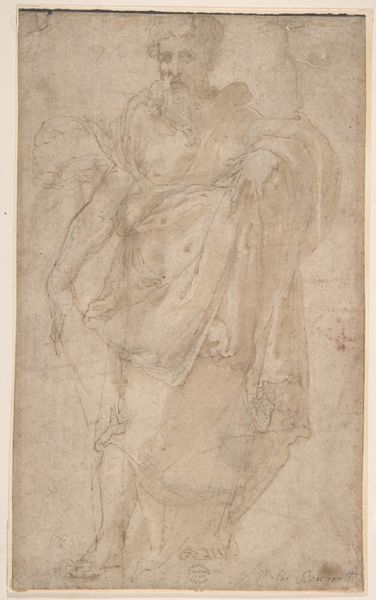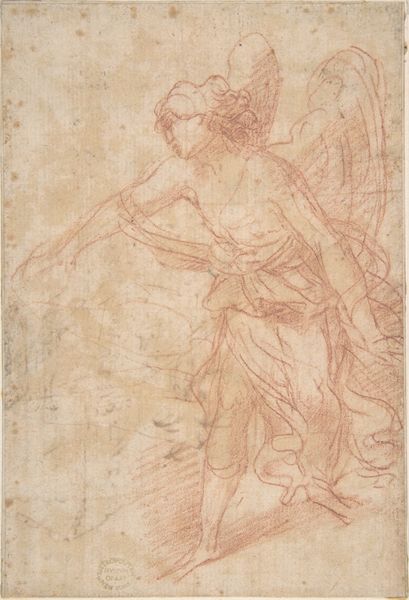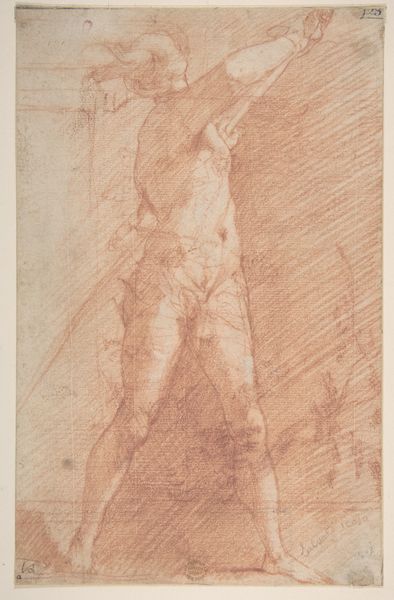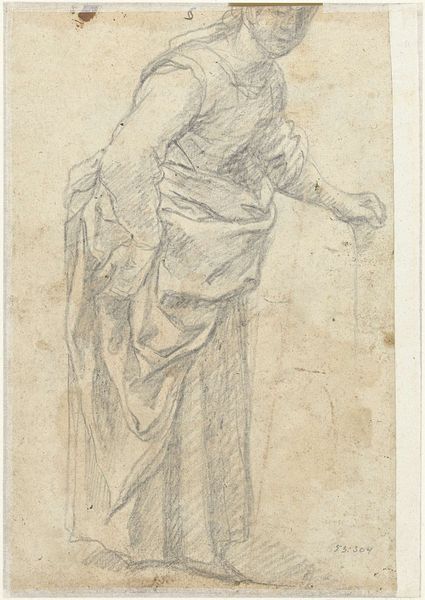
drawing, paper
#
portrait
#
drawing
#
high-renaissance
#
paper
#
italian-renaissance
Copyright: Public Domain
Curator: This sketch, held here at the Städel Museum, is attributed to Correggio, dating from around 1526. The work, entitled *Maria in der Anbetung des Kindes*, is executed in chalk on paper. Editor: My initial reaction is one of serene tranquility. The muted tones and soft lines convey a deep sense of peace. Curator: Absolutely. Observe how Correggio uses the red chalk to build form. The hatching is particularly masterful, lending a tangible depth to Mary’s garments, and guiding our eye towards the empty space presumably occupied by the Christ Child. Editor: I'm drawn to how the sketch reflects the increasing devotion of women during the High Renaissance. Mary isn’t simply a mother here; she is an active participant in adoration. I think her kneeling position shows an active signifier of the period in response to the reforming churches. Curator: A very perceptive reading. But looking beyond subject, note how Correggio employs sfumato—the blurring of lines—to achieve a gentle haziness. Consider the art historical conversation he seems to be in with the work of Da Vinci. It suggests his intent was to emulate and surpass the visual atmosphericism of his predecessor. Editor: Do you see social tension represented in this image too? Remember that 1526 was a turbulent time politically. The Italian wars loomed. Here, we've a work of quiet solace which might respond to that disruption through visual expression and devotional aid. Curator: The drawing becomes even richer with that context in mind. We begin with a master class in form, line and shape and then arrive at a sophisticated meditation of faith and turbulent histories. Editor: Precisely. We witness the dialogue between aesthetic aspiration and a period of deep societal change. The sketch becomes a focal point to a better understand of society and formal art techniques.
Comments
No comments
Be the first to comment and join the conversation on the ultimate creative platform.
